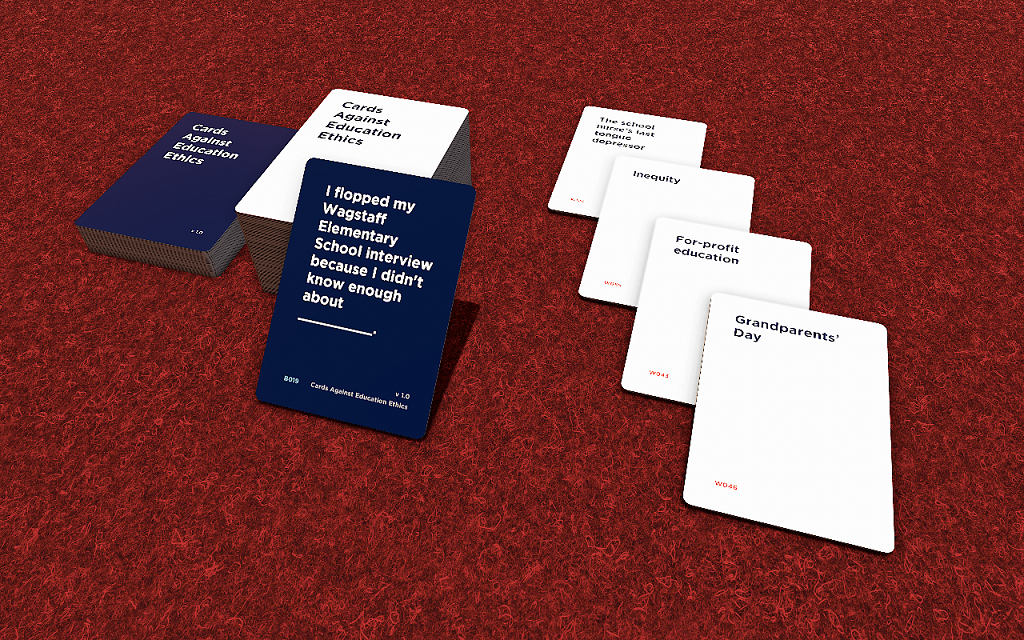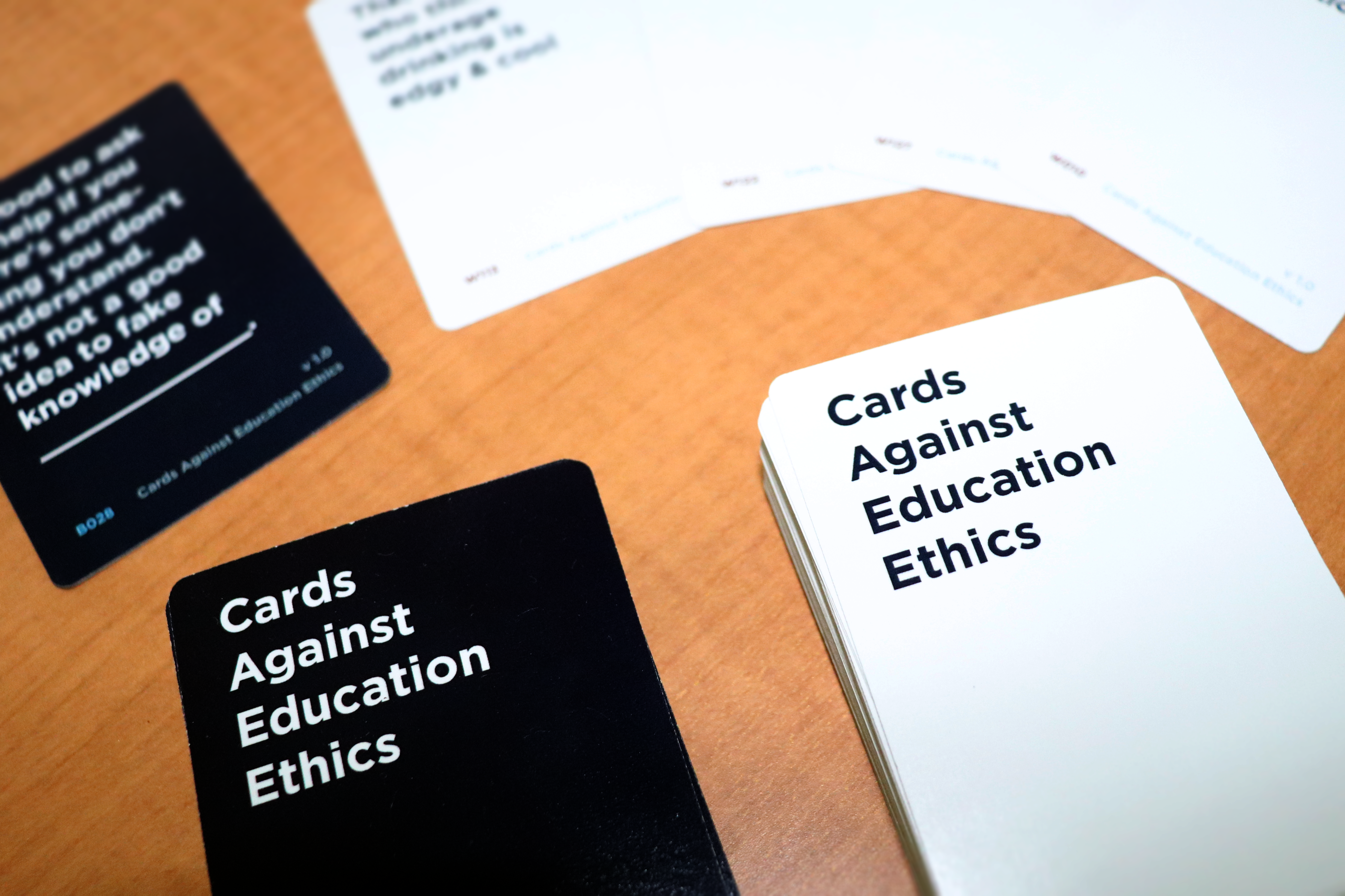
NSF AISL Research on playful approaches to Ethics Education.
As part of an ongoing NSF-sponsored research program on ethic education, several playful classroom games have been designed and are being tested. University of Pittsburgh, Rowan University, and UConn faculty are working the the E-ETHICS grant collaborative to design and test engaging classroom activities that enable future engineers and future teachers to think about their ethical decisions in first person playful scenarios and game activities, rather than in third person perspectives on Professional Standards, Codes of Ethics, or stages of moral development. Visit the E-Ethics Research site for details on the game designs and research.
Cards Against Education Ethics and Cards Against Engineering Ethics are a pair of instructional ethics card games built using mechanics drawn from the popular party game Cards Against Humanity (2011). The cards were collaboratively developed by faculty and graduate students in the University of Connecticut Educational Technology and Engineering programs in service of providing a novel, personalized approach to ethics training situated in a rich agent-environment interaction context. Cards Against Engineering Ethics, in particular, emphasizes a combination of both personal decisions (micro ethics) and decisions about engineering products (macro ethics).
Full albums of Cards Against Education Ethics sentence and word cards are available HERE and HERE, respectively.
A FREE, fully-digital, publicly-available version of Cards Against Education Ethics can be accessed HERE (requires installation of Tabletop Simulator to play).

![]()
Cards Against Education Ethics consists of:
- One-hundred fifty-two (152) white Cards Against Education Ethics word cards
- Fifty (50) blue Cards Against Education Ethics sentence cards
![]()
In Cards Against Education Ethics and Cards Against Engineering Ethics, gameplay is measured in rounds. At the start of each round, one player reads a blue sentence card drawn face-down from the top of the deck. After hearing the sentence (with a vocabulary blank in it), other players each contribute one white word card that they believe best completes the blue sentence card. “Best,” of course, is subjective—there is no way to quantify an abstract “highest value” for every possible card combination, which forces players to consider the card content, the social context, literal use of the sentences/words, figurative use of the sentences/words, and the real world ethical consequences of the implied sentence (e.g., “The school’s alumni can attest that, historically speaking, we’ve never had an issue with our controversial school mascot“). And that’s part of what makes the game instructionally-useful: it positions players to communicate about their personal relationships with the particular ethical challenges presented through gameplay.
Players should be encouraged to reflect on the sentences they create, share them with their classmates, discuss how they would approach some of the unique problems they encounter, and compare situations from gameplay with real world education and engineering ethics cases.
In Cards Against Education Ethics, some blue sentence cards are denoted as BASED ON A TRUE STORY. Sentences on these cards were created using real world ethics cases involving schools, teachers, administrators, students, and others involved with and surrounding the field of education. A full list of these cards and their corresponding cases can be found HERE.
![]()
- Separate and shuffle each set of blue sentence and white word cards.
- Each player should draw seven (7) white word cards from the white word card deck.
- The individual who most recently touched their mobile device becomes the round’s Judge; all others become Contributors. From this point forward, the Contributor who wins a round will become the next round’s Judge.
- When a round starts, the Judge reveals the top card from the blue sentence card deck, reading it out loud and placing it face-up on the table in front of all players.
- Each Contributor selects one (1) white word card from their hand that they believe best completes the blue sentence card and submits it face-down to the Judge. “Best” is at the individual Judge‘s discretion, its meaning is entirely dependent on the individual context of play (i.e., the Judge will ultimately decide what “best” means based on the group of players, the context for play, the cards played, etc.). “Best” does NOT imply there is an intended combination of sentence and word cards.
- The Judge reads the Contributors‘ submitted white word cards and selects whichever one they decide (based on their own criteria) is the round’s “best” submission. The Contributor who submitted it takes the blue sentence card as an award for winning the round. Additionally, that player becomes the next round’s Judge.
- Gameplay continues in this fashion for at least ten (10) rounds (at the players’ discretion).
- The winner is whomever holds the most blue sentence cards when gameplay ends.
